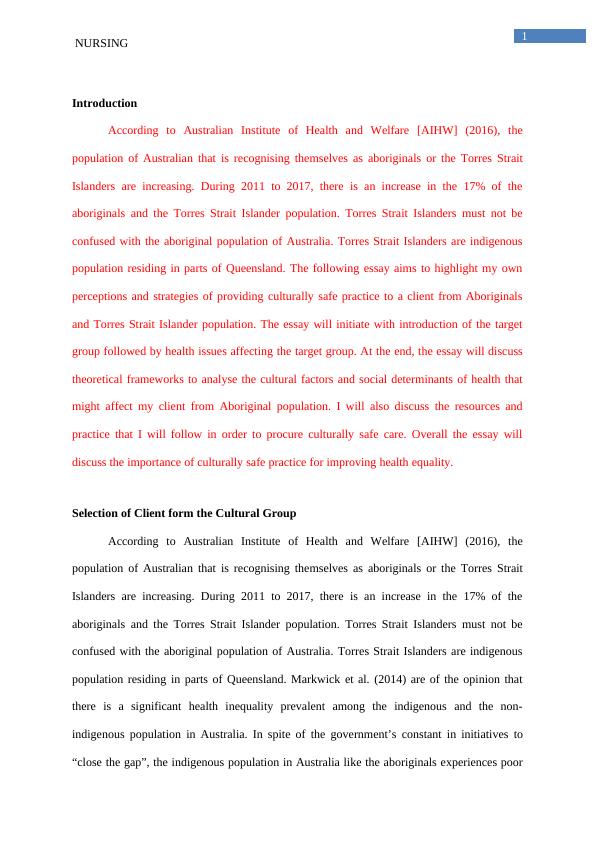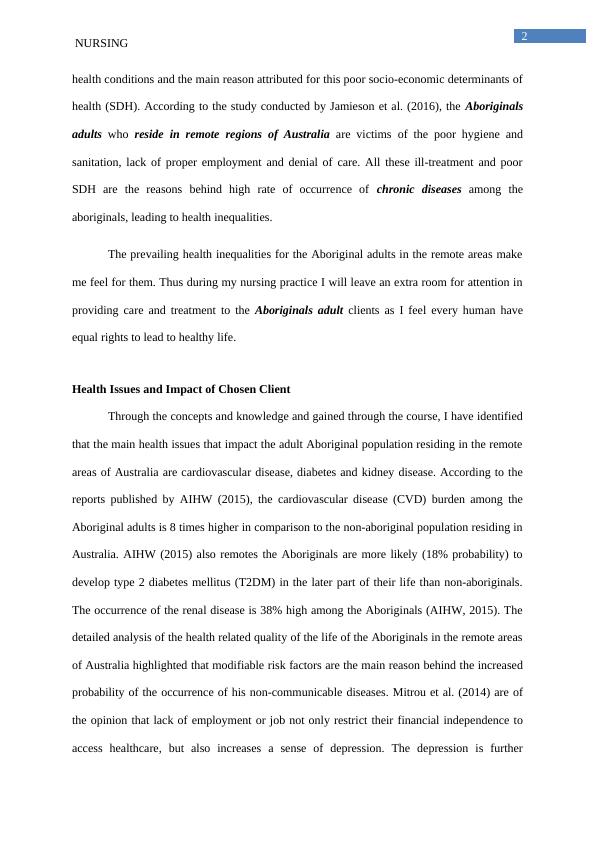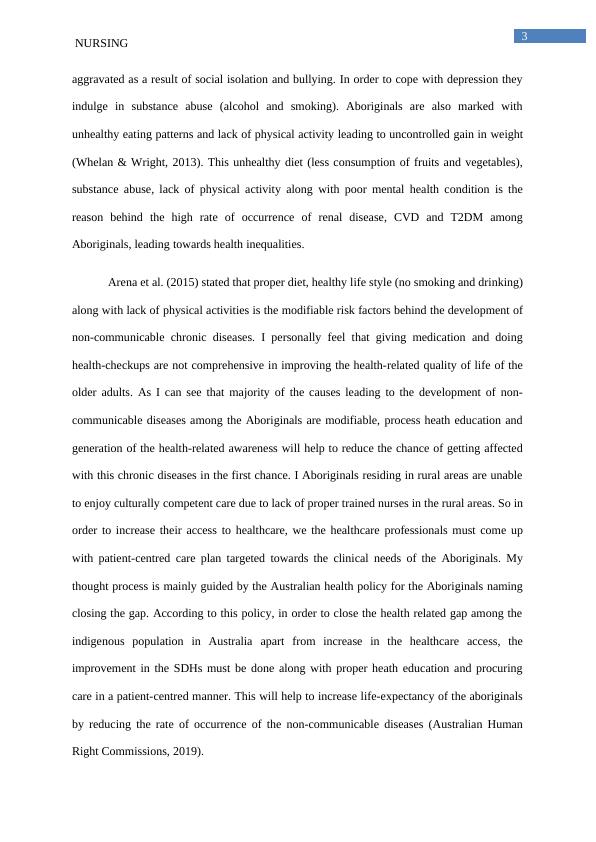Culturally Safe Practice for Aboriginal and Torres Strait Islander Population
13 Pages3474 Words95 Views
Added on 2023-01-23
About This Document
This essay highlights the importance of culturally safe practice for improving health equality among the Aboriginal and Torres Strait Islander population. It discusses the health issues affecting this population, theoretical frameworks behind health inequalities, and strategies for providing culturally safe care. The essay also emphasizes the need for patient-centered care and the utilization of resources to address the specific needs of this population.
Culturally Safe Practice for Aboriginal and Torres Strait Islander Population
Added on 2023-01-23
ShareRelated Documents
End of preview
Want to access all the pages? Upload your documents or become a member.
Reflective Essay on Cultural Factors Influencing Healthcare Delivery for Aboriginal and Torres Strait Islander People
|13
|2980
|167
Aboriginal and Torres Strait Islander Health: Traditional Healing and Western Medicine
|9
|2245
|464
Reflection on Relation Between Culture and Health
|10
|3112
|293
Chronic Kidney Disease among Aboriginal and Torres Strait Islander People
|7
|2496
|199
Indigenous Health and Wellbeing Essay 2022
|9
|2222
|19
Evidence Based Nursing Summary 2022
|9
|1589
|15




